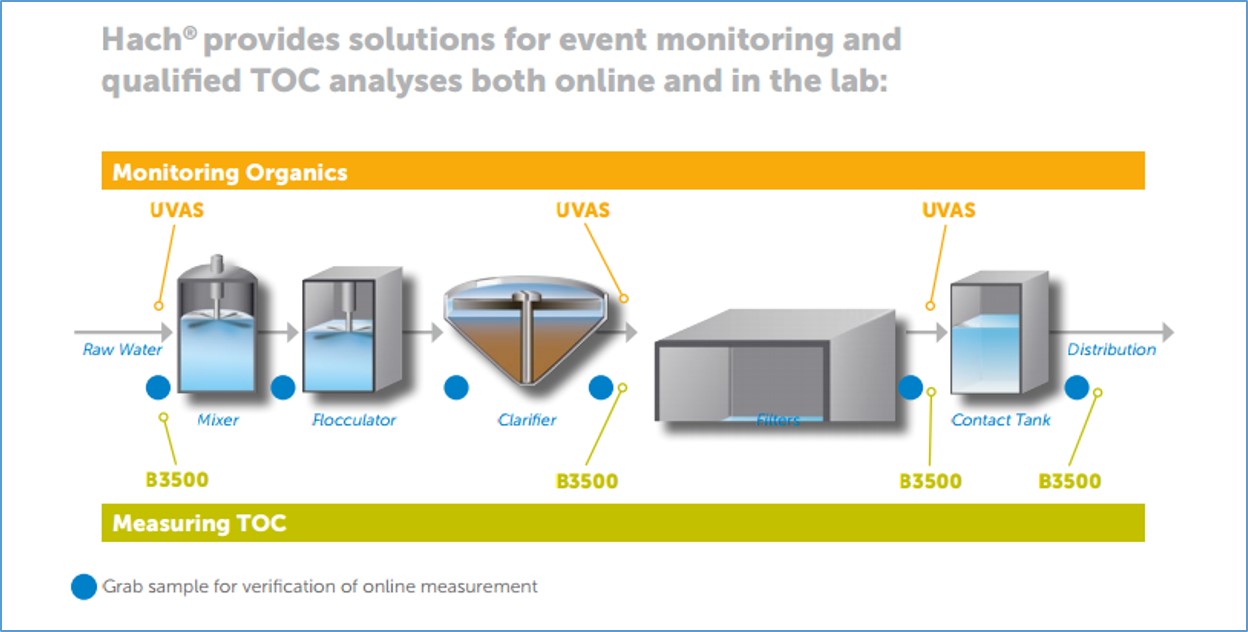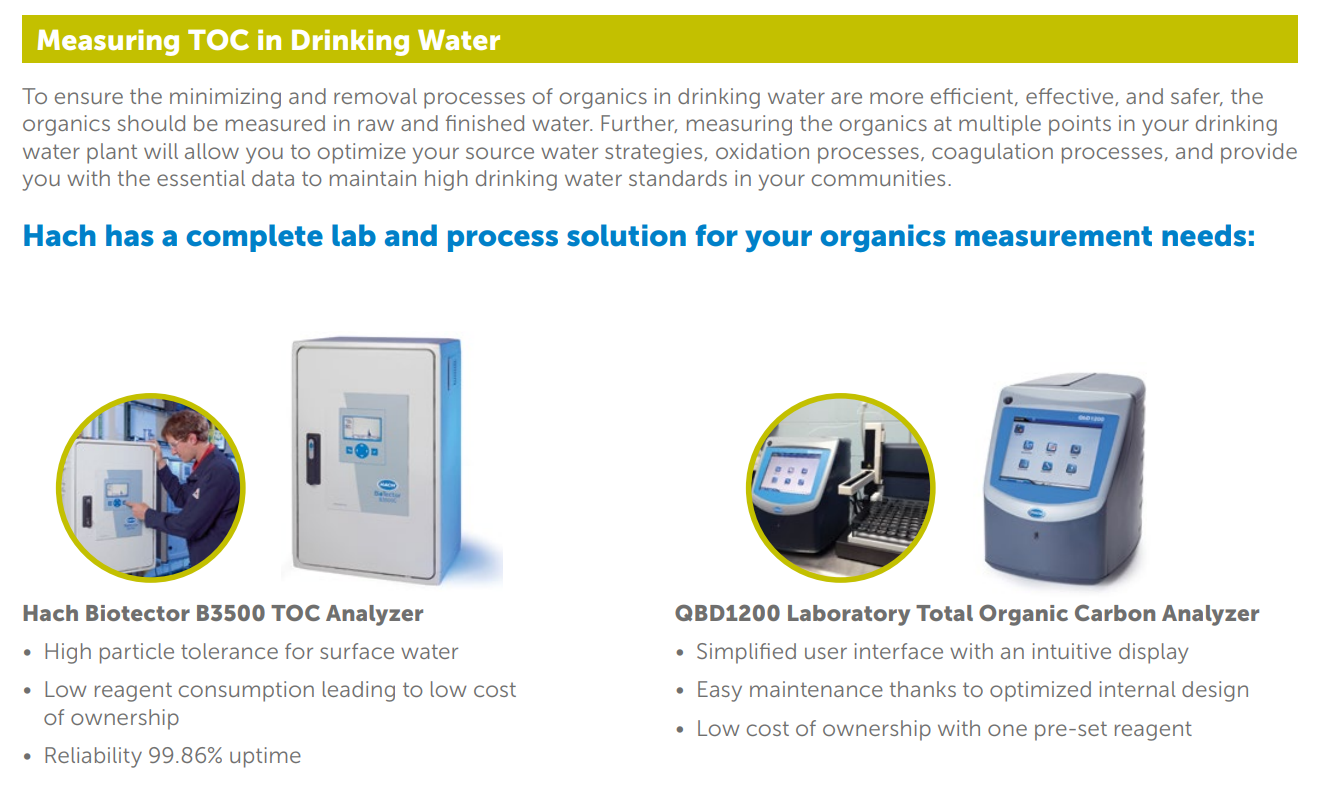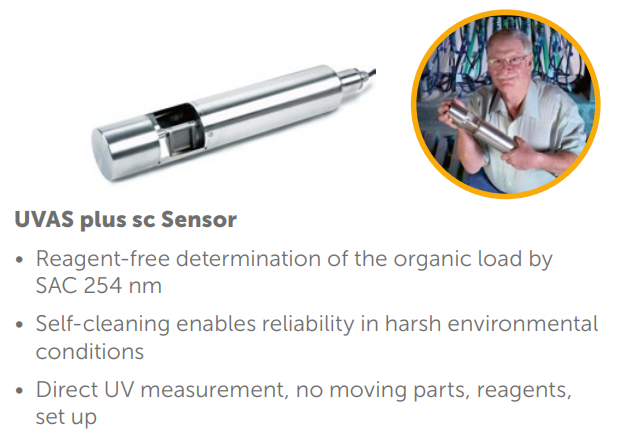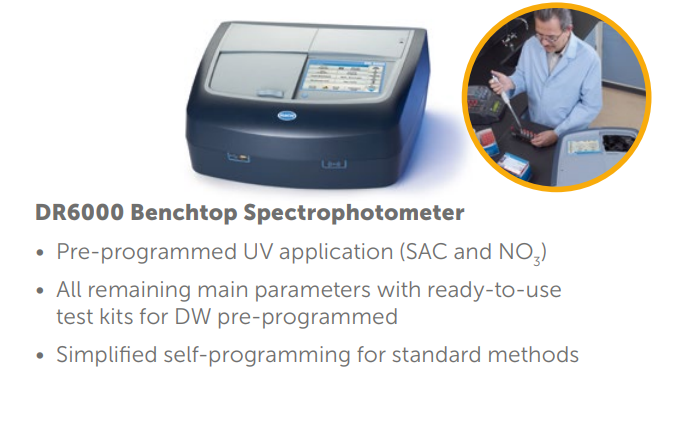自來水有機物-實驗室分析與線上監測方案
MEASURING AND MONITORING ORGANICS IN DRINKING WATER
飲用水來自許多不同的來源,如河流,湖泊,地下水和人工水庫。源水處理的技術變化很大,取決於水源本身,以及源水的雜質含量。源水最普遍的雜質之一是有機物。
Drinking water comes from many different sources such as rivers, lakes, aquifers, and man-made reservoirs. Treatment processes for source water varies widely depending on the source itself, as well as the impurities of the source water. One of the most prevalent impurities in source water is organic material. Organics in source water come from naturally occurring organic matter (NOM) as well as introduced organics coming from pollution. Organic material in drinking water affects the color, taste, and odor of water. In addition, during the disinfection process residual chlorine can react with the organics to form disinfection byproducts (DBPs) that are potentially carcinogens, such as trihalomethanes (THMs) and haloacetic acids.
源水中的有機物來自天然存在的有機物質(NOM)以及由污染而引入的有機物。飲用水中的有機物影響顏色,味道,以及水的氣味。此外,在消毒過程中殘留的氯會與有機物反應產生消毒副產物(DBPs)有潛在的致癌物質,如三鹵甲烷(三鹵甲烷)和鹵乙酸。
To avoid the formation of DBPs, it is important to monitor and measure NOM. The monitoring of NOM in raw water is also a first indication for unexpected events and helps to calculate the capacity of a treatment process. A well-established method for monitoring organic load is to measure UV absorption at 254 nm, as many organics absorb UV light at that wavelength. The amount of absorbed UV light is used to monitor NOM levels.
The common parameter for the direct measurement of NOM is total organic carbon (TOC), which can be measured online and in the lab. While UV absorption detects only dissolved and double bonded carbon, TOC provides a quantified analysis of the total organic load in your water.
Hach® provides solutions for event monitoring and qualified TOC analyses both online and in the lab:



應用文章下載
| Application Notes | Type | Language | Size | Date | Edition |
|---|---|---|---|---|---|
|
MEASURING AND MONITORING ORGANICS IN DRINKING WATER DOC030.53.10098 |
English US | 498 KB | 2016-02 | Jan 16 |


